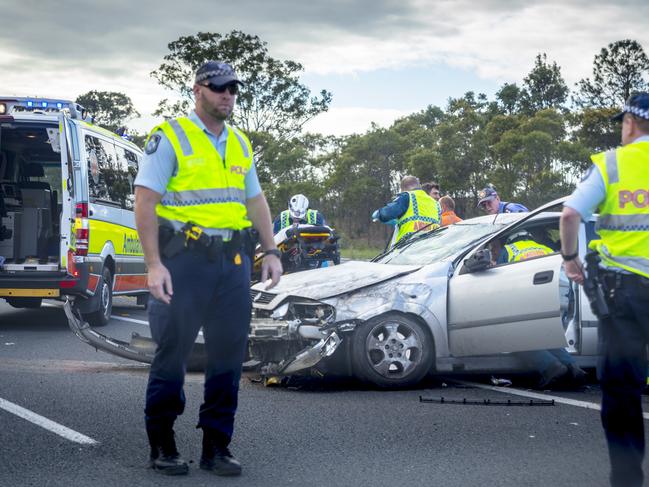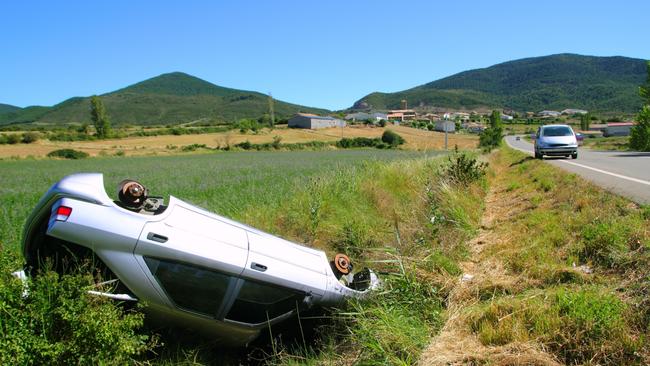Why men are dying in droves on Queensland roads
Men are almost three times more likely to die in a road crash than women, shocking new Queensland figures reveal.
QLD News
Don't miss out on the headlines from QLD News. Followed categories will be added to My News.
MEN are almost three times more likely to die in a road crash than women, shocking new Queensland figures reveal.
A staggering 2250 men died on Queensland roads in the past 10 years, making up 73 per cent of the official toll.
And in just eight months this year, 4300 men were taken to hospital after serious crashes, compared to 2656 women.

Road Policing Command Assistant Commissioner Mike Keating told The Courier-Mail: “I think it’s because women don’t take the risks that men do when they’re driving a car.”
He said motorcyclist deaths were disproportionately high for men, but fewer women rode bikes.
There have been more than 600 motorcycle fatalities in the past decade.
Mr Keating said gender didn’t matter in fatal accidents.
“It’s a loss of life,” he said.

“And then you’ve got those that are seriously injured. Long-term injuries. These are massive impacts on people that we need to be mindful of.”
He said motorists did not have to face risks if they stuck to the road rules.
One bad example was a man caught driving at Mount Isa with a blood-alcohol content of .358 in October.
“That’s seven times the proscribed limit. You know, you just wonder how that can happen in this day and age,” Mr Keating said.
In one tragic case this year, Joshua Dylan Gray, 15, was killed when the stolen car he was travelling in crashed into a home in Stafford, in Brisbane’s north, about 2am.
The driver and another passenger, both 15, fled the scene. The driver was later charged.
Another accident, just weeks later, claimed the life of a man, 24, who crashed into a tree when driving a car with four of his young friends in Murrumba Downs, north of Brisbane.
Figures show road fatalities are the leading cause of death after self-half harm for Queensland men aged 15 to 24.
For men aged 25-34 in Queensland, road deaths are the third largest factor.
The most recent survey by the ABS into causes of death showed 36 Queensland men aged 15 to 24 died in road crashes in 2016.
This was almost three times the number of fatalities for women.

Professor Barry Watson, of Queensland University of Technology’s Centre for Accident Research & Road Safety Queensland (CARRS-Q), said young drivers, particularly men, were over represented in crashes for several reasons.
“Young people, in general, they tend to be high-risk takers, it’s often a point in time where they’re looking for more personal autonomy, testing their own limits,” he said.
“When it’s combined with inexperience as drivers it really accentuates a problem.
“Unfortunately often young people can’t afford a flashier vehicle so you’ve got a double whammy of them being the most inexperienced drivers often driving the least-safe vehicle.”
Mr Watson said encouraging parents to buy the safest car for their children and improving vehicle safety were important.
CARRS-Q traffic psychology expert Dr Ioni Lewis said men could be a complex group to target in safety messaging.
She said males generally didn’t respond well to “graphic fear-based” safety campaigns.
“It’s not necessarily because they don’t see the crash or being killed as a bad thing,” she said.
“They just don’t see it as something that would happen to them.
“Humour has shown some positive effects with males but humour has to be used very carefully and appropriately and never linked to serious consequences such as a crash.”


